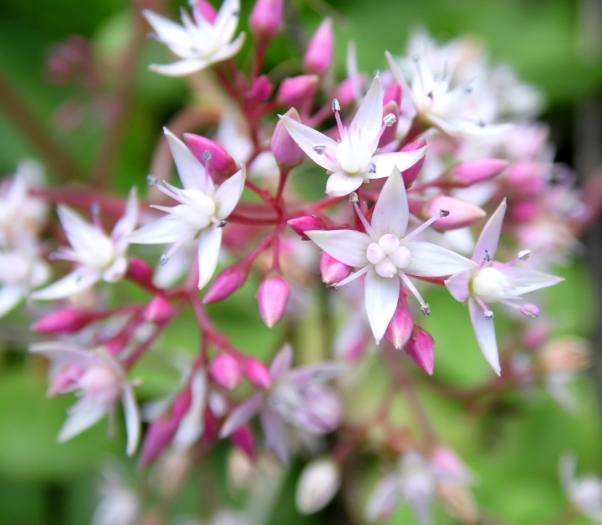Fairy Crassula
(Crassula multicava)
Fairy Crassula (Crassula multicava)
/
/

Krzysztof Ziarnek, Kenraiz
CC BY-SA 3.0
Image By:
Krzysztof Ziarnek, Kenraiz
Recorded By:
Copyright:
CC BY-SA 3.0
Copyright Notice:
Photo by: Krzysztof Ziarnek, Kenraiz | License Type: CC BY-SA 3.0 | License URL: https://creativecommons.org/licenses/by-sa/3.0 | Uploader: Kenraiz | Publisher: Wikimedia Commons | Title: Crassula_multicava_kz2.JPG | Notes: |


























































Estimated Native Range
Summary
Crassula multicava, commonly known as Fairy Crassula, is a perennial succulent native to shady forest floors and rocky outcrops in the Cape Provinces and KwaZulu-Natal of South Africa. It is a moderate to fast-growing plant that forms dense mats with fleshy, oval to round, deep green leaves, often with purple undersides in the ’Purple Dragon’ cultivar. The plant blooms in winter with clusters of white to pinkish, starry flowers, each with four petals and sepals, which are moderately showy. Fairy Crassula typically reaches a height of 15 cm but can grow up to 30 cm. It is known for its drought resistance and can tolerate low temperatures just above −3 °C.
Fairy Crassula is valued for its ease of maintenance, drought tolerance, and attractive foliage, making it an excellent choice for ground cover in water-wise gardens. It thrives in partial to full shade, which can influence the vibrancy of its leaves and flowers. While it prefers well-draining soil, it is adaptable to various soil types. Overwatering should be avoided to prevent root rot. In cultivation, it is used for underplanting in shady areas, rock gardens, and as a container plant. It can be propagated by cuttings or through plantlets that form on the flower head and drop off to grow independently. However, gardeners should be cautious as Crassula multicava can become invasive outside its native range due to its self-seeding habit and prolific plantlet production.CC BY-SA 4.0
Fairy Crassula is valued for its ease of maintenance, drought tolerance, and attractive foliage, making it an excellent choice for ground cover in water-wise gardens. It thrives in partial to full shade, which can influence the vibrancy of its leaves and flowers. While it prefers well-draining soil, it is adaptable to various soil types. Overwatering should be avoided to prevent root rot. In cultivation, it is used for underplanting in shady areas, rock gardens, and as a container plant. It can be propagated by cuttings or through plantlets that form on the flower head and drop off to grow independently. However, gardeners should be cautious as Crassula multicava can become invasive outside its native range due to its self-seeding habit and prolific plantlet production.CC BY-SA 4.0
Plant Description
- Plant Type: Succulent
- Height: 1-1.5 feet
- Width: 1-3 feet
- Growth Rate: Moderate, Rapid
- Flower Color: Pink, White
- Flowering Season: Spring, Winter
- Leaf Retention: Evergreen
Growth Requirements
- Sun: Full Sun, Part Shade, Full Shade
- Water: Very Low, Low
- Drainage: Medium, Fast
Common Uses
Bee Garden, Bird Garden, Butterfly Garden, Deer Resistant, Drought Tolerant, Fire Resistant, Groundcover, Low Maintenance, Rock Garden, Showy Flowers, Street Planting
Natural Habitat
Shady forest floors and rocky outcrops in the Cape Provinces and KwaZulu-Natal of South Africa
Other Names
Common Names: Pitted Crassula, London Pride, Cape Province Pygmyweed
Scientific Names: , Crassula multicava,
GBIF Accepted Name: Crassula multicava Lem.